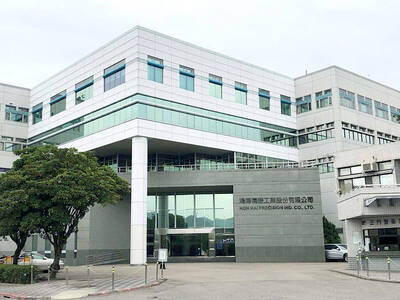Currency traders are gearing up for one of the busiest weeks of the year.
The European Central Bank (ECB) is forecast to boost monetary stimulus, the US Federal Reserve gets its last chance to scrutinize US payroll data before its Dec. 15-16 meeting, and Fed Chair Janet Yellen appears before Congress.
Those events may prove crucial for determining the path of the dollar, which is poised for its best month since July.
Investors are increasingly questioning how much further the US currency can strengthen after appreciating almost 10 percent this year. The Bloomberg Dollar Spot Index is trading near its highest in data going back to December 2004, while Societe Generale SA’s Kit Juckes wrote in a client note on Friday that the currency is overvalued by some measures. At the same time, futures show traders continue to pile on dollar wagers amid speculation that the Fed will raise rates next month.
“It’s all going to come down to next week,” Bipan Rai, director of foreign-exchange strategy at Canadian Imperial Bank of Commerce’s CIBC World Markets unit, said from Toronto. “There’s really a mishmash of event risks to watch for.”
The Bloomberg Dollar Spot Index, which tracks the greenback against 10 peers, added 0.5 percent this week. The measure is set to rise 2.3 percent this month.
The US currency rose for a second week versus the euro, adding 0.5 percent to US$1.0593 per euro. The dollar was little changed at ¥122.85.
European policymakers meet on Thursday to discuss monetary policy and what the ECB can do to prop up sluggish inflation within the region. The central bank is considering cutting its deposit rate further below zero and adding to its program of quantitative easing.
That contrasts with the US, where officials are edging closer to a rate increase as early as next month. Yellen is scheduled to address the Economic Club of Washington on Wednesday and appear before a congressional committee on Thursday, a day before this month’s jobs data are released.
US companies probably added 200,000 jobs this month, according to a survey of analysts compiled by Bloomberg.
That would be down from 271,000 positions added last month, the most this year.
“Our expectation is that next week the payrolls report should continue to show that employment growth is still expanding solidly in the US,” London-based Bank of Tokyo-Mitsubishi UFJ Ltd currency strategist Lee Hardman said. “The divergence trade has regained momentum and that’s encouraging the rebuilding of long dollar positioning.”
The British pound fell for a second day after a report confirmed UK economic growth slowed in the third quarter.
The pound dropped 0.4 percent to US$1.5041 at 4:45pm London time, after sliding 0.2 percent on Thursday.
It fell 1 percent this week, the most since Nov. 6. Sterling slipped 0.2 percent to £0.7041 per euro, compounding a 0.5 percent weekly decline.

Shares in Taiwan closed at a new high yesterday, the first trading day of the new year, as contract chipmaker Taiwan Semiconductor Manufacturing Co (TSMC, 台積電) continued to break records amid an artificial intelligence (AI) boom, dealers said. The TAIEX closed up 386.21 points, or 1.33 percent, at 29,349.81, with turnover totaling NT$648.844 billion (US$20.65 billion). “Judging from a stronger Taiwan dollar against the US dollar, I think foreign institutional investors returned from the holidays and brought funds into the local market,” Concord Securities Co (康和證券) analyst Kerry Huang (黃志祺) said. “Foreign investors just rebuilt their positions with TSMC as their top target,

H200 CHIPS: A source said that Nvidia has asked the Taiwanese company to begin production of additional chips and work is expected to start in the second quarter Nvidia Corp is scrambling to meet demand for its H200 artificial intelligence (AI) chips from Chinese technology companies and has approached contract manufacturer Taiwan Semiconductor Manufacturing Co (TSMC, 台積電) to ramp up production, sources said. Chinese technology companies have placed orders for more than 2 million H200 chips for this year, while Nvidia holds just 700,000 units in stock, two of the people said. The exact additional volume Nvidia intends to order from TSMC remains unclear, they said. A third source said that Nvidia has asked TSMC to begin production of the additional chips and work is expected to start in the second

REVENUE PERFORMANCE: Cloud and network products, and electronic components saw strong increases, while smart consumer electronics and computing products fell Hon Hai Precision Industry Co (鴻海精密) yesterday posted 26.51 percent quarterly growth in revenue for last quarter to NT$2.6 trillion (US$82.44 billion), the strongest on record for the period and above expectations, but the company forecast a slight revenue dip this quarter due to seasonal factors. On an annual basis, revenue last quarter grew 22.07 percent, the company said. Analysts on average estimated about NT$2.4 trillion increase. Hon Hai, which assembles servers for Nvidia Corp and iPhones for Apple Inc, is expanding its capacity in the US, adding artificial intelligence (AI) server production in Wisconsin and Texas, where it operates established campuses. This

Garment maker Makalot Industrial Co (聚陽) yesterday reported lower-than-expected fourth-quarter revenue of NT$7.93 billion (US$251.44 million), down 9.48 percent from NT$8.76 billion a year earlier. On a quarterly basis, revenue fell 10.83 percent from NT$8.89 billion, company data showed. The figure was also lower than market expectations of NT$8.05 billion, according to data compiled by Yuanta Securities Investment and Consulting Co (元大投顧), which had projected NT$8.22 billion. Makalot’s revenue this quarter would likely increase by a mid-teens percentage as the industry is entering its high season, Yuanta said. Overall, Makalot’s revenue last year totaled NT$34.43 billion, down 3.08 percent from its record NT$35.52